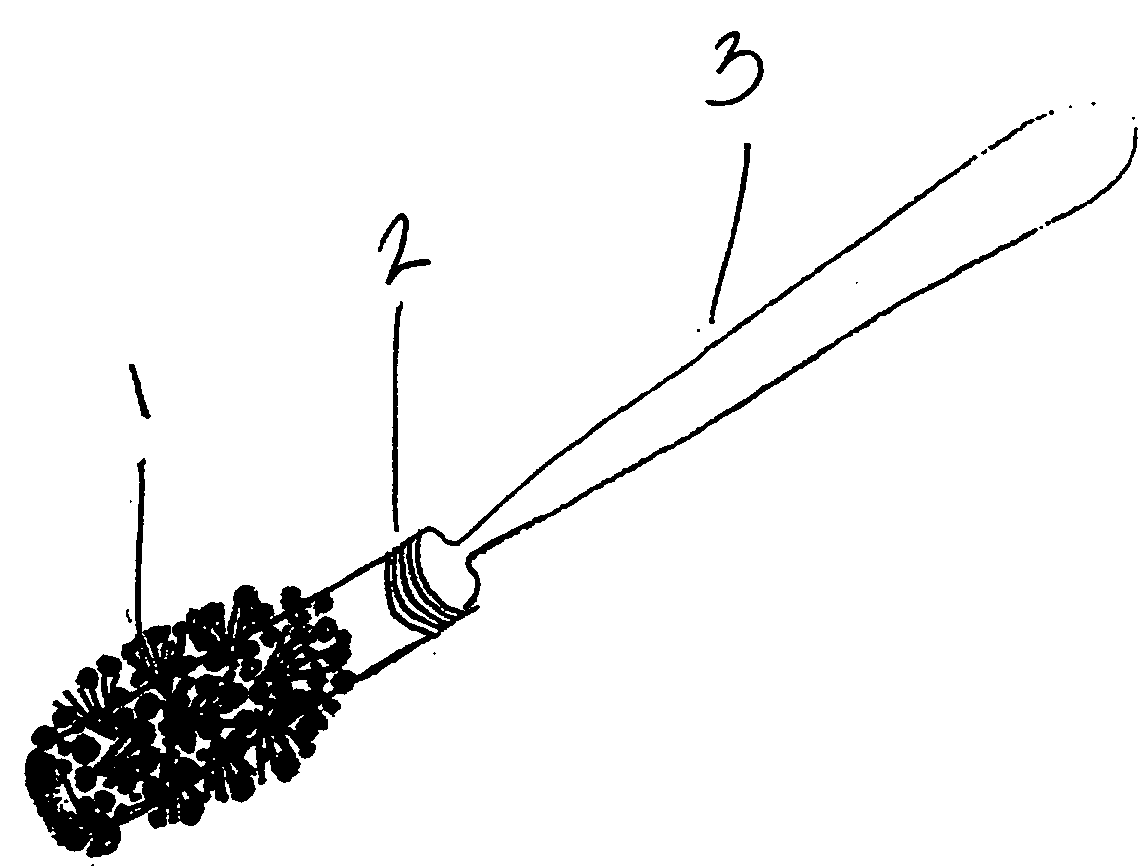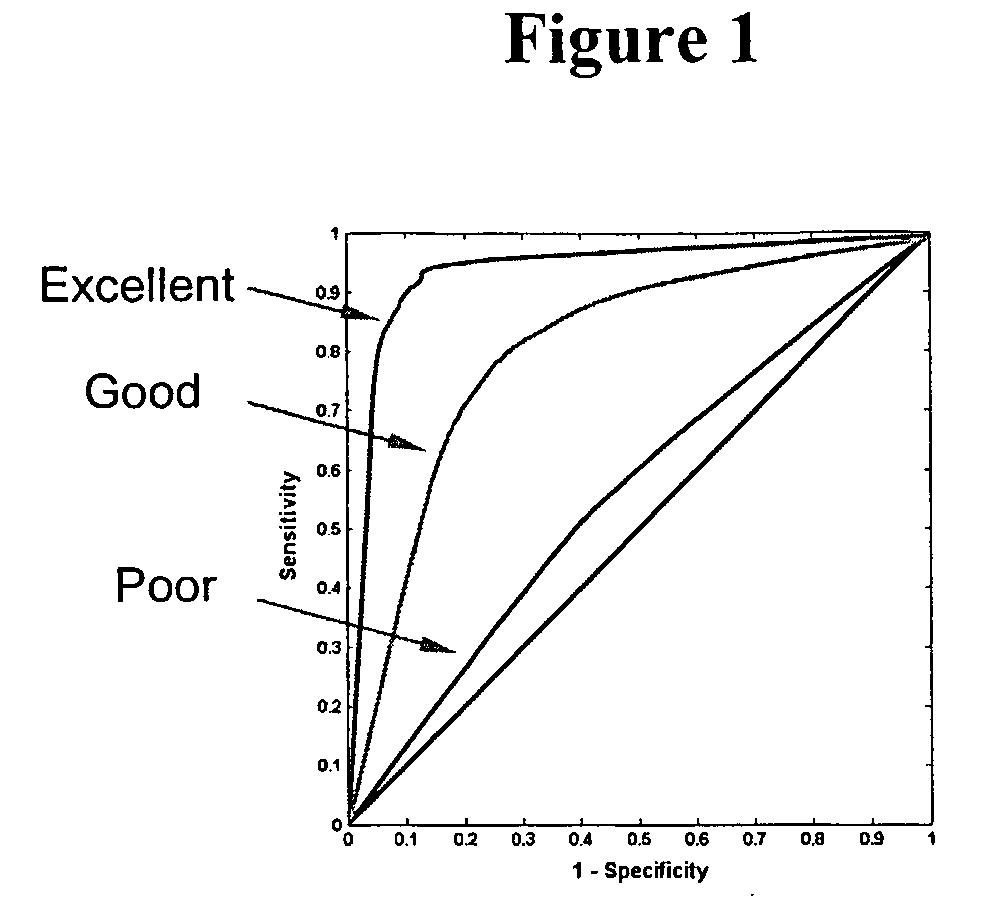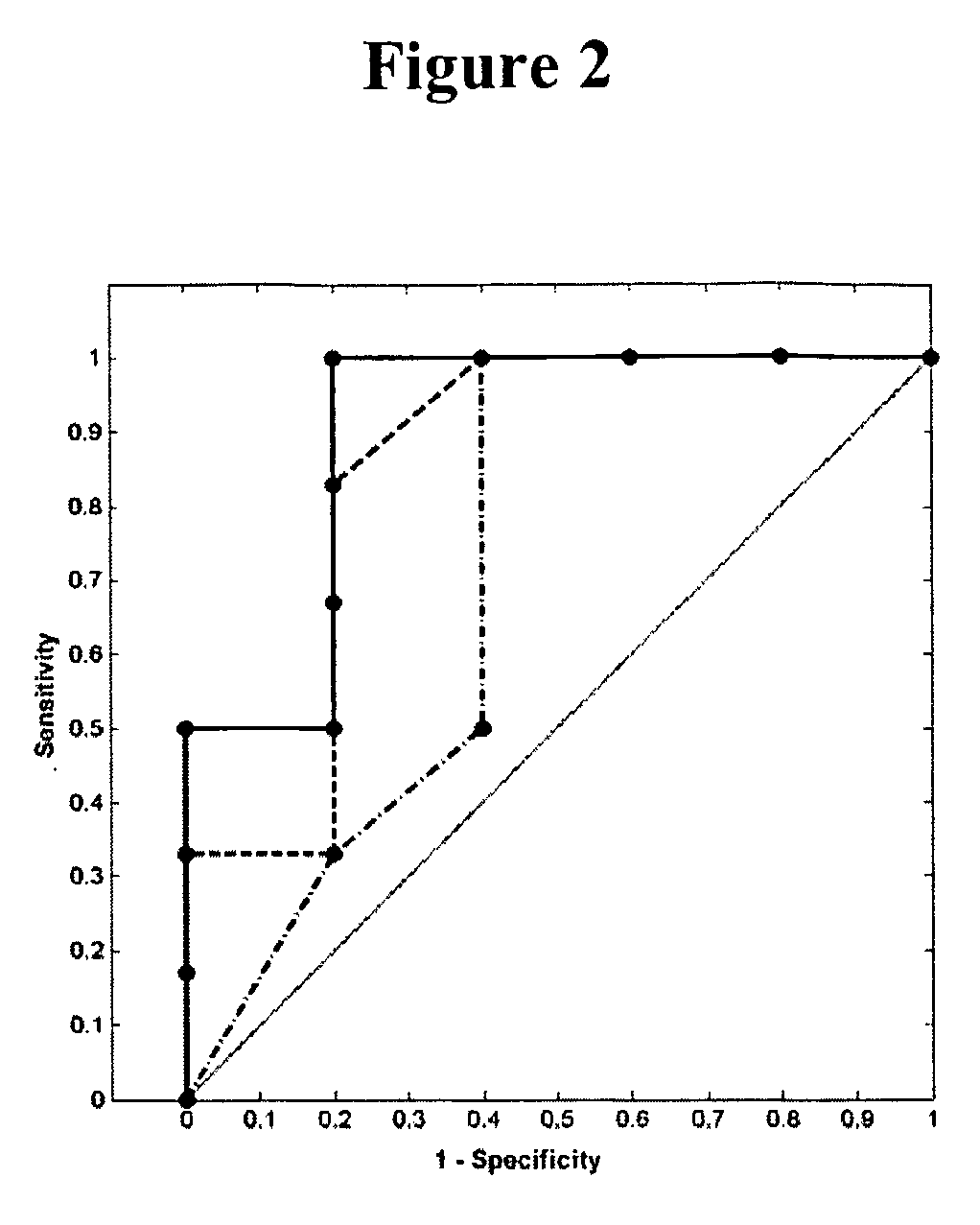Method and Devices for Screening Cervical Cancer
a cervical cancer and screening method technology, applied in the field of cellular materials analysis, can solve the problems of high false-negative rate, low sensitivity of the test, and cancer of the cin
- Summary
- Abstract
- Description
- Claims
- Application Information
AI Technical Summary
Benefits of technology
Problems solved by technology
Method used
Image
Examples
example 1
Microscopic Imaging of the Cervical Cancer Cell Lines Stained with a Cocktail of PE-p16INK4a and APC-Mcm5 Antibodies
[0241]In this experiment, two cervical cancer cell lines HeLa (HPV18 positive) and Ca Ski (HPV16 positive) were stained by both an isotype and an antibody to compare their staining intensity. These two cell lines are good positive controls to test the effectiveness of the antibody staining. Two mouse monoclonal antibodies for p16INK4a (clone ZJ11) and for Mcm5 (clone CRCT5.1) were used. The p16INK4a antibody and corresponding IgG1 isotype were conjugated with PE fluorochrome to form a PE-p16INK4a antibody and a PE-IgG1 isotype. The Mcm5 antibody and corresponding IgG2b isotype were conjugated with APC fluorochrome to form an APC-Mcm5 antibody and an APC-IgG2b isotype.
[0242]HeLa cells and CaSki cells were fixed and permeabilized with a methanol-based solution. Before staining, the cells were washed with a staining buffer twice. Then the PE-p16INK4a and APC-Mcm5 antibodi...
example 2
Microscopic Imaging of Negative and HSIL Cervical Specimens Stained with a Cocktail of PE-p16INK4a and APC-Mcm5 Antibodies
[0246]A negative cervical specimen S7188 and a HSIL cervical specimen S7184 were stained with a cocktail of antibodies and isotypes, respectively. The negative and HSIL classifications of these two specimens were determined by experienced cytopathologists. The antibodies used herein for p16INK4a and Mcm5 proteins were the same as those used in Example 1. The p16INK4a antibody was conjugated with PE fluorochrome. The Mcm5 antibody was conjugated with APC fluorochrome. In the experiment, 8 μg / million-cell concentration of PE-p16INK4a and 8 ug / million-cell concentration of APC-Mcm5 were added to the samples simultaneously. The staining process lasted 30 minutes at 4° C. Then the samples were washed to remove unbound antibodies. The same concentration of PE-IgG1 and APC-IgG2b isotypes were also used to stain the samples.
[0247]The samples were transferred to the slide...
experiment 3
Imaging of Negative, ASCUS, LSIL, and HSIL Cervical specimens Stained with a Cocktail of PE-p16INK4a and APC-Mcm5 Antibodies
[0252]In this experiment, we stained eleven cervical specimens using the p16INK4a-Mcm5 cocktail antibody. The eleven specimens included five negatives, one ASCUS, two LSIL, and three HSIL specimens.
[0253]Each specimen was divided into two parts. One part was unstained and used to establish autofluorescence compensation coefficients. Another part was stained with the cocktail of PE-p16INK4a and APC-Mcm5 antibodies. The stained cells were transferred to a slide for imaging. About 70 cells, including cells with different shapes, were imaged for each specimen. The average fluorescence intensities were computed for each cell imaged. FIGS. 6(a)-(d) give an example of the DIC and fluorescence images of a normal and a precancerous or cancerous HSIL cell in a HSIL cervical specimen. The average PE and APC intensities of the HSIL cell are significantly higher than that o...
PUM
 Login to View More
Login to View More Abstract
Description
Claims
Application Information
 Login to View More
Login to View More - R&D
- Intellectual Property
- Life Sciences
- Materials
- Tech Scout
- Unparalleled Data Quality
- Higher Quality Content
- 60% Fewer Hallucinations
Browse by: Latest US Patents, China's latest patents, Technical Efficacy Thesaurus, Application Domain, Technology Topic, Popular Technical Reports.
© 2025 PatSnap. All rights reserved.Legal|Privacy policy|Modern Slavery Act Transparency Statement|Sitemap|About US| Contact US: help@patsnap.com



